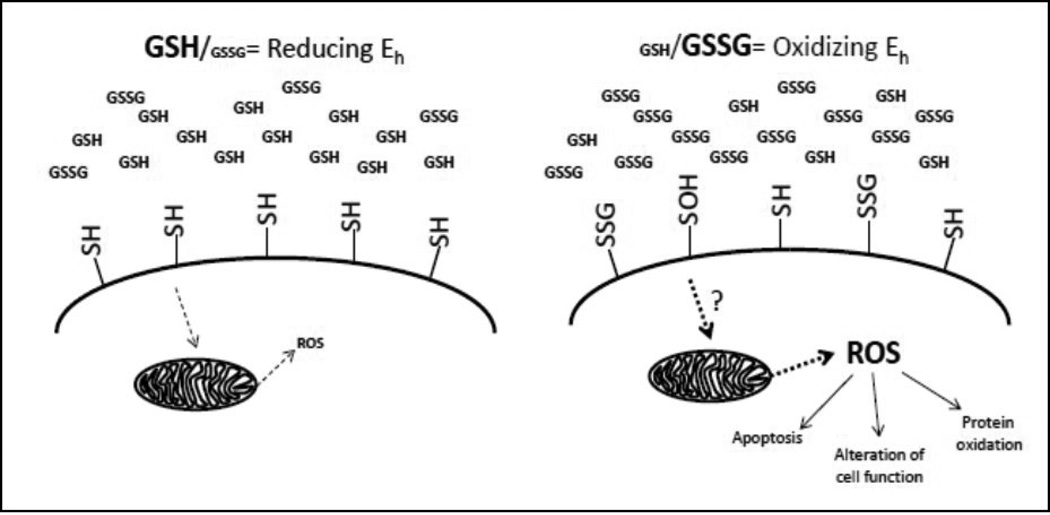Figure 5.
Extracellular redox regulation of membrane protein thiols via GSH redox potential and control intracellular signaling and function. Extracellular GSH exists primarily in its reduced form (left). Redox potentials can be tightly regulated through cellular ROS production, GSH export and Cys transporting. In a reducing extracellular environment, protein thiols are reduced. In an oxidizing extracellular environment (increase in GSSG concentrations), alterations to extracellular thiols can occur to yield sulfenic acid formation (−SOH) or S-glutathionylated (−SSG) modifications. Although the mechanism but which this occurs remains unknown, an outcome of these modifications is the intracellular production of mitochondria-derived ROS, which can contribute to changes in cell function, signaling and protein redox states and prime cells to become apoptotic. Thus, crosstalk between extracellular and intracellular environments has profound effects of cellular physiology and may contribute to cellular pathophysiology.

